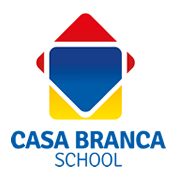Bilingualism
Yes, nós somos bilíngues!
The main characteristic of bilingual schools is that they use a foreign language in their school routine. For a school to be considered bilingual it is not enough to give classes in a foreign language. The school needs to be a place where the different school activities are experienced in both languages. By doing this, children acquire the language code of their second language little by little and, as a result, they master the second language completely without resorting to translations into their native language.
HOW DOES THE LEARNING OF READING AND WRITING OCCUR IN A BILINGUAL SCHOOL?
Learning how to read and write occurs only once, around the age of six, in the mother tongue. Later on children start learning the alphabet of a second language, establishing the process of interaction that gives rise to language sense and meaning, which is common to both languages.
WHAT IS THE ADVANTAGE OF BILINGUAL EDUCATION AT AN EARLY AGE?
It is scientifically proved that when a child reaches the age of one, their neurons are completely formed, which facilitates the acquisition of better pronunciation.
IS IT NORMAL FOR CHILDREN TO USE FOREIGN WORDS INSTEAD OF NATIVE ONES AND MIX THE TWO LANGUAGES?
Yes. Children who are becoming bilingual occasionally mix both languages. This is known as the ´Exchange of Codes`. This is a temporary thing. As learning in both languages proceeds, the child loses the need and/or desire to mix the two.
We would like to inform you that inside the school diary the daily occurrence list can be found, which should be read and signed by parents or guardians when necessary.
